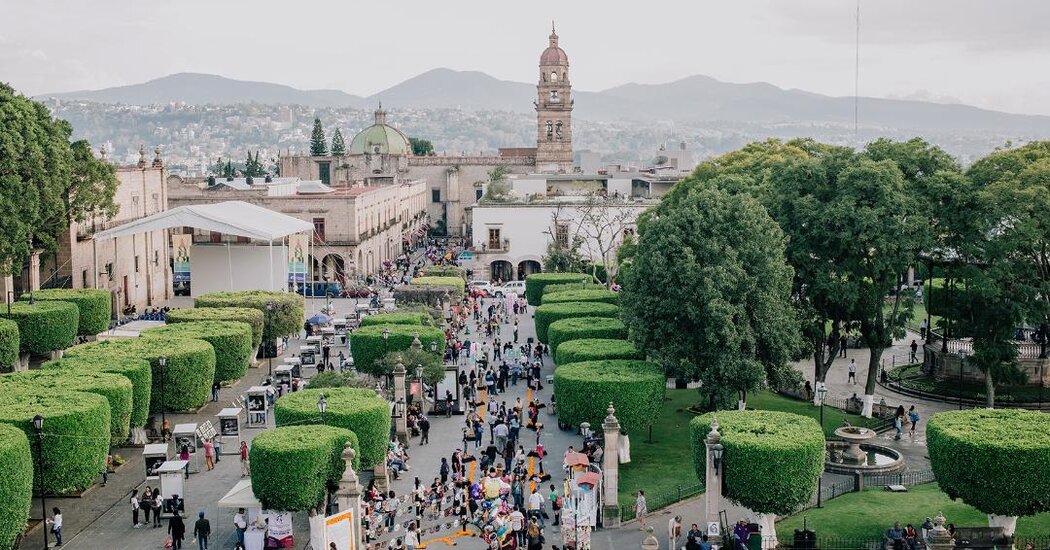Welcome to T Wanderlust, a new travel newsletter from the editors of T Magazine. Twice a month, we’ll recommend global destinations and hotels worth visiting. Sign up here to find us in your inbox every other Friday, along with our T List newsletter each Wednesday. And you can always reach us at tlist@nytimes.com.
Most days at dusk, as the sun sets behind the surrounding hills, the Mexican city of Morelia blushes a deep shade of pink. Built largely from rose-colored quarry stone, the town came into existence in the middle of the 16th century, when the Spanish invaded the Guayangareo Valley — east of Lake Pátzcuaro, where the Indigenous Purépecha ruled what was then among the largest empires of Mesoamerica — and established a settlement that would become not only the state capital of Michoacán but one of the country’s most beautiful historic centers.
Founded in 1541 as the New City of Michoacán, then renamed as Valladolid in 1578 and finally as Morelia in 1828, it contains nearly 250 historic buildings laid out on a grid draped over a gently sloping hill. Murals painted by Alfredo Zalce in the 1950s and ’60s overlook the late Baroque interior patios of the government palace, offering a jagged 20th-century counterpoint to the 17th-century frescoes, lost until the second half of the 20th century, that arc in delicate grisaille over the ceiling of the Pinacoteca de San Agustín. Church bells sound from the soaring towers of Morelia’s cathedral, among Mexico’s loveliest religious structures, while at the Conservatorio de las Rosas, a music school set in a former cloister, phantom chords from hidden pianos still echo in the centuries-old loggia.
Morelia, which has a population of around 850,000, has also been a place of revolutionaries. It gave birth in 1809 to a bold conspiracy against colonial rule and was the hometown of the freedom fighter and priest José María Morelos y Pavón, who helped steer the struggle for independence from 1811 until his execution in 1815 and whose name the city now bears. In the 21st century, Michoacán has been at the center of the Mexican government’s U.S.-backed war on drugs, riven by a violence and insecurity that, for years, drove visitors away from the state capital. But Morelia’s historic center, mostly insulated from the worst of Michoacán’s troubles, remains vibrant, thanks in part to the success of its annual International Film Festival, which will hold its 20th edition from Oct. 22 to 29, and to…
Click Here to Read the Full Original Article at NYT > Travel…
